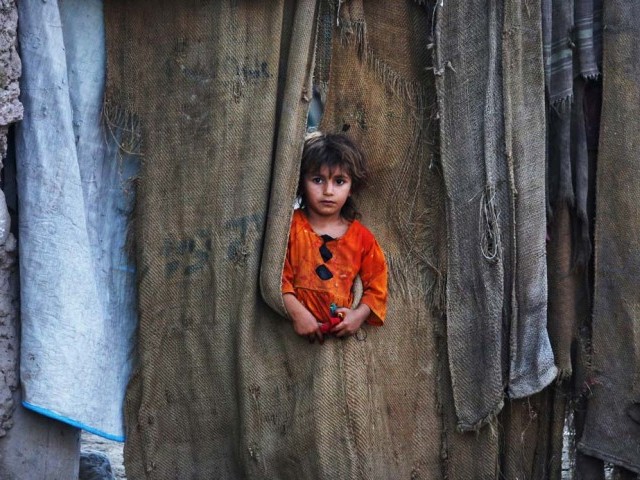By Ezzatullah Mehrdad-Being a child in Afghanistan is a life-time misfortune, where children are invisible victims of the war, desperate poverty and domestic violence. The ongoing war in the country silently leaves children dead or wounded in record numbers. As it seems no end to the war, children likely remain victims. Not only war, but the desperate poverty pulls Afghan parents to rely on sending children to a life of toil—child labor. Even those Afghan children who are not forced to work, they remain victims of the country widespread domestic violence takes away very firstly happiness of children.
It can be said that Afghanistan is a child-populated country. According to figures, about 48 percent of Afghans are below of the age fifteen. This means that about a half of the country’s population is children who were born in the war against terror since 2000. In other words, Afghan children belong to war-generation.
The heavy fighting from the northern province of Badakhshan to the Taliban-heath lands of Helmand and Kandahar in the country, very firstly traumatize childhood of the innocent children who have no power to make the country safe. Their childhood is all about to play with bullets and stray ordnance. Each year across the country, many children loss lives by old-ordnance and weapons. In May, five children were killed in an explosion in Laghman province. The victims were Mohammad Nawab, 7, his brother Mohammad Malyar, 6. Their cousins were Mahmad Zaher, 7; Zerylai, 8; and another Malyar, 10.
The war victimizes Afghanistan’s children as mentioned by the international watchdogs report. The United Nations in May said that violence across the country in the first four months of the year had killed 283 children and left wounded another 704. The report shows 21 percent increase as compared to the same period of last year.
The scary part of the ongoing war is that it would victimize more Afghan children as usage of “indirect and/or explosive weapons in civilian-populated areas, indiscriminate improvised explosive devices,” are persisted, the U.N. added. As long as war goes on in the country, Afghan children are traumatized and victimized. Their childhood means war, playing with bullets and witnessing dead.
Ugly face of being a child in Afghanistan is not only being victim of war, but also victim of desperate poverty. After the withdrawal of most foreign forces in 2014, and the collapse of many development projects, most Afghan parents face harsh urban poverty. Meanwhile, more Afghan refugees return home day-by-day from Pakistan and Iran. As a result, Afghan big cities have become shelter houses of poverty.
Afghan parents, unless they are educated themselves, do not see why they should not send their children to work. They often rely on their children to cope with harsh poverty. So far, the number of children, who are in a life of toil, has grown visibly over the past decade.
Jafar, 12, used to spend his childhood in traffic jams around Kabul. He began working at the age of eight as an espandi, waving a tine of coal mixed of espand—a kind of plant—over cars to ward off evil spirits. Jafar was born and spent his early childhood in countryside of Bamyan where he was a rancher. His family moved to Kabul, aiming to escape poverty. In contrary, Jafar was forced to join many other child workers in streets.
Child workers are almost found everywhere. From bakery, smithy and car repair shops to transportations, children suffer. They may do different jobs, but they have one thing in common which is bearing all pains. They are everywhere, but invisible. According to UNICEF’s estimate, 30 percent of Afghan children ages 5-14 in 2011 were engaged in child labor.
Harsh victimization by poverty can be seen in begging. Under sunshine in the streets of Afghan cities, children are asleep to touch hearth of people to pay a small amount of money. Afghans are ready to let their children be hungry for days, hopping it would touch more hearths. Even Afghan parents allegedly poison them with drug so they can sleep for a day.
All Afghan children, of course, are not victimized by poverty. A large number of them are lucky enough that they are not forced to work and they used to spend childhood in homes. But still child workers and normal children both have something in common: victims of domestic violence.
The too long war in the country led the people to believe that violence is an acceptable part of everyday life and as a result domestic violence is common part of life. Every day domestic violence takes away firstly happiness of children.
Zahra, 12, is my neighbor girl who faces daily basis domestic violence. Almost every day, her mom beats her small body. In Weekends, the turn goes to her father, who is a worker. He beats his daughter harder than the mother. Each time, heart wrenching cries erupt from the bottom of Zahra’s heart and tears wash her beaten face. Almost every child in Afghanistan has similar story and is a victim of domestic violence.
All told, Afghan children have worst possible childhood experience that a child can have in the world. At the same time, Afghans are too blind to seek ways to prevent children from being victimized by the war, desperate poverty and domestic violence.
 Afghanistan Times
Afghanistan Times




